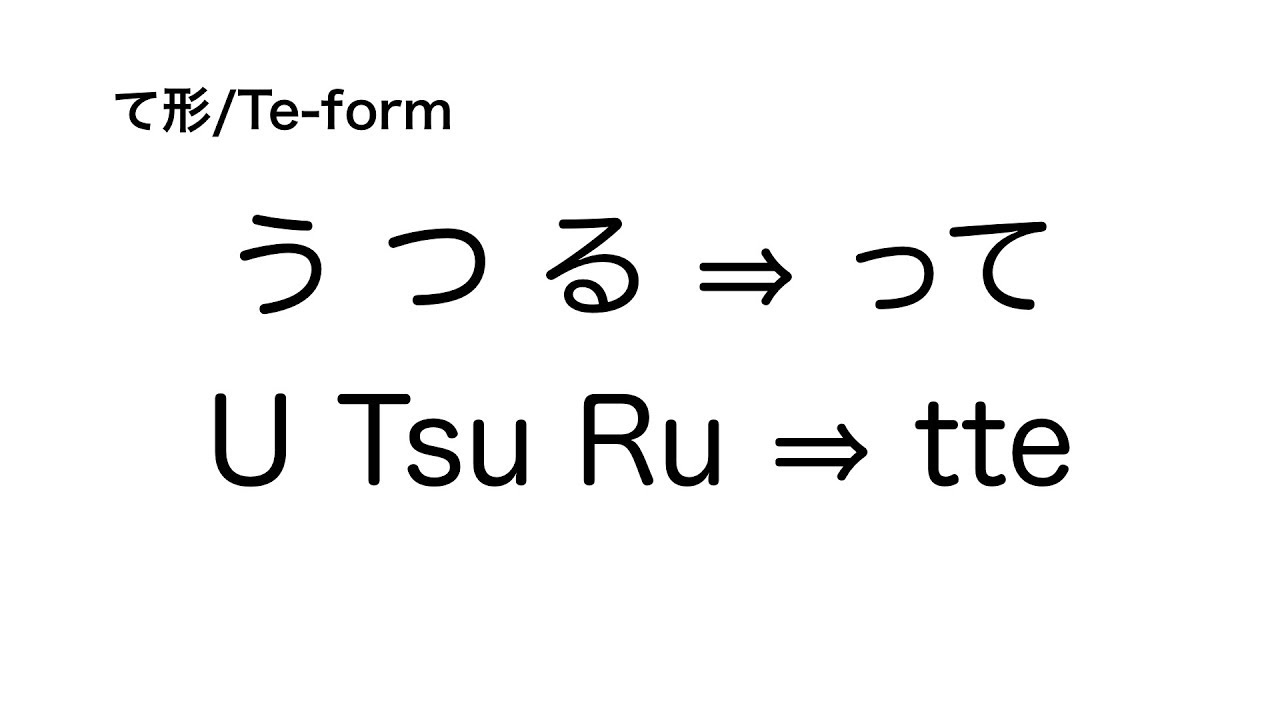I read an explanation and look at a few example sentences so that the structure makes sense and I feel like I have an idea of how it’s used. After that… I kinda just go back to reading, watching anime and so on and hope that the structure will stick? If I encounter it again and I’ve forgotten what it means, I’ll just look it up. Rinse and repeat. Also, I tend to try to break grammatical structures down into their constituent parts so I have a way of deducing what they mean if I forget.
I had a list of the changes that happen for particular consonant rows and gradually absorbed them through exposure. Over time, I think you’ll develop a list of go-to verbs that will help you remember how to form the て-form for a particular consonant when you forget (because they’re classic examples). These rules are for godan verbs, of course. Let me see if I can recreate a similar list from memory…
つ, う, る – って: っ is just a little つ, so that’s easy. For う I think of 言って. For る… no particular example, but I’m used to it by now. Maybe 知る? しる→しって
く – いて: I think of… つく, I guess?
ぐ – いで: そそぐ is an example? I don’t know, I find this consonant rare, and how I actually remember it is this: G is the voiced version of K, and D is the voiced version of T, so of course, when Ku becomes Gu, iTe will become iDe.
ぶ, ぬ, む – んで: if you ‘collapse’ the vowel in ぬ, you get ん. Logical. For ぶ, I think of 飛ぶ, and for む, I guess のむ works? Honestly though, you can just tell yourself something like ‘M is similar to N, and both B and M are sounds pronounced by putting one’s lips together’, and so somehow that gives us んで for everything. You could even go with some sort of ‘rendaku’ logic e.g. you get the ん from the consonant used, and then you tell yourself that it can’t be -nTe because ん often causes rendaku in Japanese, so it’s -nDe.
す – して: mentally, I treat all す verbs as relatives of する. They all seem to have a ‘cause/do’ meaning after all, so they have to be conjugated the same way.
By the way, I have no idea if this helps you, but I believe the て-forms are historically all descended from the masu-stem (the one ending in an ‘I’ sound) + て, so what I do is that I mentally make up some story for what happened to each of the sounds: if you try to pronounce -hiTE or -riTE quickly, I think it’s quite naturally for the H and R sounds to collapse and vanish, leaving you with a glottal stop (represented by っ). Similar thing with -chiTE, I think. As for -kiTE and -giTE, I imagine that the K and G sounds are pretty small in front of an I, so they vanished and the voicing got transferred to the て・で. As for N, M and B, just try pronouncing -niTE, -miTE and -biTE quickly after vowel. This last approach is just a personal, pseudo-historical attempt at recreating the pronunciation shifts in Japanese though, so if it doesn’t help you because it requires too much background knowledge, ignore it. It’s just an idea for you to consider.
I guess that’s all from me. I added a lot of details to the list because these are the ideas I use to make the て-form ‘logical’ for me. I can’t guarantee that they’ll help you though. That aside, I watch a lot of anime, so after a while, the sounds just stuck.
